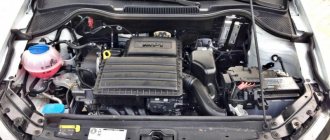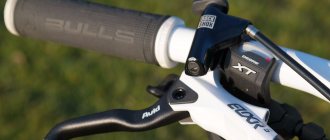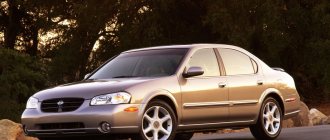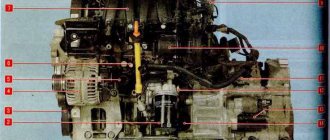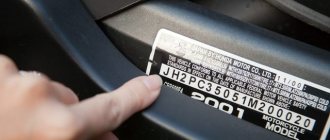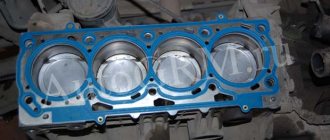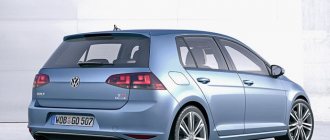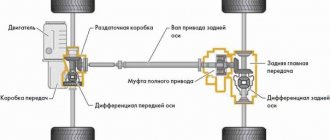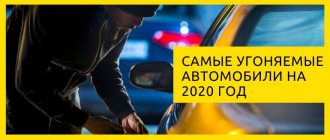Volkswagen is the largest German automobile concern. The head office of this concern is located in Germany, in Wolfsburg. This company was organized in 1937. The company began to actively develop in the post-war years. Initially, cars were produced only in Germany, but today this concern includes 342 companies that are engaged not only in the production of cars, but also in providing services related to car maintenance. The VW Group today includes Bugatti, Skoda, Audi, Bentley, Seat, Lamborghini and truck companies MAN and Scania.
The most productive years in the development of the concern were the 70s. It was at this time that models such as the Golf and Passat entered the market.
Today the concern owns 48 car assembly plants, which are located in Europe - 15 countries and in Asia, America, Africa - 6 countries. Cars produced here are sold in more than 150 countries around the world.
Where is Volkswagen Polo assembled?
Volkswagen Polo - this car is one of the most popular models produced by the concern. This fact is evidenced by the huge number of sales around the world, which is growing every year. This is a relatively inexpensive but very high quality car. This model is produced in two versions - hatchback and sedan. The car with a hatchback body is produced only for Europe and is assembled in Germany. On the Russian market, the Volkswagen Polo is sold only in a sedan version. This car is assembled in our country. The advantage of the Volkswagen Polo sedan is the fact that it was developed specifically for our market. The car body was as close as possible to the appearance of its European counterpart, and at first glance it is quite difficult to determine which of them is which. The car received slightly larger sizes, which only pleased its buyers. The interior also resembles a European hatchback.
Volkswagen Polo
Fans of this model note that they only have German engines; the manufacturer simply does not have any others. At our factories, a 1.6-liter engine is simply mounted in a vehicle. The transmission is also only European production and the buyer can choose between a 5-speed manual or a 6-speed automatic.
Experts note that the Russian assembly compares favorably with others. This happens because the car was specially adapted to our far from ideal operating conditions.
Characteristics of Skoda / Skoda
Skoda (Skoda Automobilova AS), a Czech automobile manufacturing company. The headquarters is located in Mladá Boleslav. Part of the Volkswagen concern.
Skoda was founded in 1925 on the basis of the famous Czech one (Laurin and Klement). The appearance of this logo is associated with the name of Emil Skoda, who in 1866 became the chief engineer of the mechanical workshops in Pilsen, which belonged to Arnost Waldstein. Over time, Skoda products become famous throughout the world.
First, the first new car, the Skoda 4R, appeared, and in the early thirties, immediately after the global industrial crisis, the creation of a fundamentally new car, the Skoda 420, began. A four-cylinder engine with a power of 20 hp. s., a 3-speed gearbox, made in a block with the main gear, allowed a speed of 60 km/h, with a fuel consumption of 8 l/100 km. The car was designed for four seats, had two doors, and a trunk that could be opened from the outside, which was a rarity for cars of that time.
During World War II, Skoda's workshops, which were controlled by Nazi Germany, produced military equipment, gas generator trucks, and only a small number of passenger cars.
Since 1945, when the communist government came to power in post-war Czechoslovakia, the Skoda Popular 1101 car was put on the assembly line, which was a restyling of the car created before the war. This car went down in history under the name Tudor, which comes from the merger of the words Two door - “two doors”. The car continued to be called that even when a four-door modification of the body was released into production.
But the truly first new post-war car was the Skoda 420, released in 1953 and given the popular name Spartak. The car had a 4-cylinder engine producing 40 hp. With. The chassis structure was traditional for Skoda - a spinal frame. At the end of the 50s, the car was given a new front suspension - instead of a transverse spring, springs and telescopic shock absorbers were installed. The rear transverse spring remains. The modification was considered a new model and given its own name - Octavia.
The car turned out to be successful, and it was produced until 1971. And since the beginning of the 70s. A completely new era is dawning in the history of Skoda - the designers are creating a 2+2 sports coupe - the Skoda 110R, which in turn served as the prototype of a sports car capable of becoming a worthy competitor on sports tracks. The engine from the production car was installed in this body, but increased to 1289 cm3. volume. Subsequently, its power was raised to 140 hp. With. at 8500 rpm. The car was assigned an index - Skoda 130RS. The Skoda 130RS has competed both in rallies and on the circuit. Her biggest success came in circuit racing in 1981. Then Skoda won the title of European champion among factory teams, and even beat BMW.
In the 80s Czech automakers created the Skoda Favorit, a car that claimed to be the leading car of the entire socialist community, capable of creating competition for the Soviet Zhiguli. But in 1989, the Velvet Revolution took place in Czechoslovakia, and the automobile plant began, as they say, not its best years. Western European-made cars began to arrive from abroad, and production disruptions began. The government took up the task of solving the problems of the automobile plant and decided to sell the plant to a foreign investor. 24 companies applied for this role, including BMW, GM, Renault. However, the best conditions were offered by Volkswagen, which retained production of the Favorit model, raising its quality.
The secret of Skoda's popularity is the harmonious combination of price and quality of this car. German designers managed to correct all the shortcomings and shortcomings of the Skoda Favorit, turning it in 1994 into the elegant Felicia, which, both in its technical characteristics and design, is more reminiscent of Western European counterparts than a car produced by a country that previously belonged to the socialist camp.
Real success came with the release of a fundamentally new car for Skoda - Octavia. Its first show took place in September 1996 at the Paris Motor Show. The appearance of the Skoda Octavia brings the car closer to its Western counterparts from the Volkswagen dynasty. It was on Octavia that the concern's new base platform, Golf IV, was tested, as a result of which both Golf and Octavia found their buyers, and by that time the Volkswagen concern completely owned Skoda.
In March 1998, updated versions (facelift) of the Skoda Felicia and Skoda Felicia Combi models and the Skoda Octavia Combi station wagon were introduced.
This was confirmed by the appearance of the Fabia model at the end of 1999, which from a stylistic point of view became a completely new car, while retaining Skoda's signature features. Now Fabia is rapidly conquering both the European and Russian markets, successfully competing with models from leading automobile companies in this class.
By 2000, Skoda became the only company that managed to increase sales in Germany. Particularly popular is the Fabia limousine model and its variation, the compact Fabia Combi.
In 2001, Skoda introduced the updated Skoda Superb.
Website: www.skoda-auto.com
Representative office in Russia: www.skoda-avto.ru
Where is Volkswagen Tiguan assembled?
Volkswagen Tiguan is a fairly new SUV in its class. This vehicle was designed on the basis of a golf platform, as a result of which not every plant can assemble it.
The most modern production facilities are in Germany and France, but Tiguan from these countries comes to our country only in isolated cases.
Volkswagen Tiguan
For Russia, this SUV is produced at a plant in Kaluga, where there is a very modern assembly line. Human work here is reduced to a minimum, and specialists have only the highest qualifications. What speaks in favor of the domestic assembly of the Volkswagen Tiguan is that the car is somewhat adapted to our conditions - the ground clearance has been increased. The model is characterized by increased reliability. This is also due to the fact that the factories have very strict quality control; at the slightest defect, the vehicle must be remade. Even those car enthusiasts who are skeptical about the domestic assembly cannot see a hint of unreliability.
Where is Volkswagen Jetta assembled?
The new modification of the Volkswagen Jetta is produced in Russia and Mexico. Both options are available on our automobile market, but the Mexican assembly usually costs a little more. Both production facilities have the most modern equipment, and almost 70% of parts for assembly are delivered from Germany. When choosing between manufacturing countries, you should always take into account the fact that Mexico produces cars designed for excellent European roads, and the climate in Europe is much milder than in our country.
Volkswagen Jetta
Jetta in Russia, like most Volkswagen cars, are produced at the Kaluga Automobile Plant. This model has undergone a number of changes taking into account the needs of Russian drivers. Engineers have developed a purely Russian Conceptline package. It can have two types of transmissions - 5-speed manual and 6-speed, a full safety kit, audio system, power steering, electric drive and air conditioning. The Russian version is equipped with a special winter package, namely heated mirrors, seats and washer nozzles, as well as a spare wheel. Thus, when choosing between a Mexican assembly and a domestic one, it is best to give preference to ours.
Why did they open a second plant for Skoda Octavia in Russia?
Starting in 2013, the assembly of the new generation of Skoda Octavia began on the territory of the Gorky plant. Company representatives say they plan to expand production in the coming years. Therefore, the assembly of the model is carefully monitored so that consumers can receive a high-quality and reliable car.
The chairman of the company's directorate said that Russia is the third largest market for product sales. That is why it was simply necessary to create a plant here. Moreover, our cars are much cheaper than those made in the Czech Republic. This will help maintain sales dynamics and increase it. Cars are assembled, painted and welded here.
By the end of 2020, the Czech manufacturer will present the new fourth generation of Skoda cars in the Russian Federation. Assembly will be carried out at a plant in Nizhny Novgorod. Not only liftbacks but also station wagons will be assembled here.
Previously, these models were supplied to us exclusively from Europe. The new generation of Skoda Oktavia began to be produced in Russia in November last year.
The new generation has changed, both externally and internally. The car differs from its predecessor:
- modular platform MBQ;
- new radiator grille;
- 19-inch wheels;
- bumpers of a different shape;
- 10.25-inch electronic instrument panel;
- 2-spoke multifunction steering wheel;
- large touch display;
- wireless device for charging smartphones.
Where the Skoda Octavia is assembled, the engine range is quite diverse, there are gasoline units with output of 110, 150 and 190 hp, as well as turbodiesel engines with 115, 150 and 200 horsepower to choose from. In the European market, buyers have an available version of this model with gas and hybrid engines.
The most basic configuration of our assembly was initially estimated at 589,900 rubles. Further, the modification cost buyers 764,900 and 839,900. The most expensive diesel version was sold at a price of 924,900 rubles. Now the cost is a little more expensive, and you can find it out from official dealers.
Where is Volkswagen Golf assembled?
The Volkswagen Golf is rightfully considered the most successful model of the concern and ranks third in terms of sales in third place. It was this car that became the founder of such a popular golf class today. Like most of the concern's models, it has gone through several stages of updating.
The latest Volkswagen Golf model was introduced to the market in 2013; it appeared in Russia at the end of the same year. For those who care about the country of assembly, it will be interesting to know that the seventh generation of this model is assembled only in Germany. This model was also assembled in Russia, but only the fifth model, in the city of Kaluga.
Volkswagen Golf
The seventh generation is different in that the cars have become more economical and cheaper, and at the same time lighter and faster. This car is one of the safest vehicles in its class.
History of the development of the Skoda concern
Skoda Auto is a Czech automobile manufacturer that specializes in the production of passenger cars under the Skoda brand. The company's headquarters is located in the city of Mladá Boleslav. The car logo is shaped like a winged arrow and was first used back in 1926. It was Mr. Maglie who became the founder of this logo; between 1915-1920 he was interested in design. And it was always based on a modified Indian head on which there was a headdress with feathers. During this period of time, the word "Indian" often meant a new symbol.
The modern automobile company began its activities by manufacturing bicycles. Namely, Vaclav Laurin and Vaclav Klement, being a mechanic and a bookseller, respectively, began producing Slavia bicycles of their own design in 1895. Just four years later, things began to improve for Laurin & Klement Co. And the creators decided to produce racing motorcycles. The riders who rode them began to win international competitions. A few more years later, the company took another decisive step in its production - the production of cars.
The Czech automobile industry first saw a car in 1905, produced by Laurin & Klement, the model was called Voiturette A. It was a great commercial success, as were subsequent passenger cars produced.
The family enterprise L&K grew into a joint-stock company, which after 1914, in addition to everything else, began to produce military products. And in order to strengthen their position, the creators of the joint-stock company decided to find an influential partner.
It was the Skoda car that appeared a little later. First, L&K merged with Skoda-Pilsen in 1925. Now all passenger cars were produced under a personal logo and with an appropriate name.
As for the later development of Skoda, at the end of 1990 the automobile plant chose the German concern Volkswagen AG as a partner. At the beginning of the next 1991, a contract was signed between the companies, where Skoda became the fourth well-known brand of the concern, which consisted of the Volkswagen, Audi, and SEAT brands. If initially VAG received 31% of sales, then by 1998 this value increased to 70%. And in the same year, the Czech company finally changed its name to Skoda auto .
At the turn of the 21st century, the concern already had full control over Skoda. And she, in turn, began to carry out a number of activities to create more modern cars. This is how the Felicia, Octavia and Fabia models became popular and had great commercial success for the company. And a little later, the real pride of the Skoda concern appeared - this is the Skoda Rapid.
Where is Volkswagen Passat assembled?
Volkswagen Passat - this model can satisfy even the most demanding driver. Here, German quality, comfort and modernity are especially clearly combined. The Volkswagen Passat is naturally produced in Germany, Malaysia and China. Until 2010, this model was also assembled in Russia, in Kaluga.
Volkswagen Passat
New Passats officially come to our country only from Germany, but if you buy second-hand, you can also get a domestically assembled car. An interesting fact is that in Germany it takes 48 hours to completely assemble a machine, this indicates maximum debugging and automation of the process. Another noteworthy thing is the very strict control system, in which it is practically impossible for a car that has even minor problems to leave the assembly line.
Where is Volkswagen Touareg assembled?
This model has undergone two generations. The car has its own “target audience” - middle-aged men who have a fairly high status, are engaged in business and prefer reliability and comfort in cars. The cost of the latest generation starts from two million in the basic version. This mid-size crossover looks strict and moderately aggressive. Manufacturers paid a lot of attention to the equipment of the car and its efficiency. The debut of this model took place in 2002.
Volkswagen Touareg
Today in Russia you can buy a Volkswagen Touareg assembled in Bratislava or Kaluga.
Commercial vans and minibuses assembled in Russia
The Caravelle family minivan, the Multivan minibus, and the Transporter van - these vehicles are in great demand for municipal institutions and various organizations. In addition, the cars are also positioned as family cars. These latest generation models feature not only improved technical characteristics, but also a fresh design and higher quality interior trim. These cars are produced in Germany and Poland. The assembly of cars of this line has also begun at the Russian plant in Kaluga.
If you are about to buy a new car, you should not get hung up on the country in which it was assembled. Volkswagen is very attentive to the quality of the vehicle coming off the assembly line and will not tolerate reputational losses. Quality control is exactly the same in all countries of the world, although the choice is always up to the buyer.
In the Czech Republic
The Czech Republic is the main producer of the brand. In this country, the main production facilities of the concern are located in the same place as the headquarters. Mlada Boleslav is a small town with a population of only about 44 thousand inhabitants, located in the Central Bohemian Region, in the northern part.
Many work in several shifts, so activity does not stop for a minute. It is noteworthy that the time it takes to assemble a Skoda Octavia does not exceed 3.5 hours. Most of the operations are automated. Technologies are constantly being improved and updated. All car models are assembled in Mlada Boleslav, including the new Skoda Octavia. In addition, there is a technology museum on the territory of the plant.
In just one day, about two thousand cars come off the assembly line. Since 1991, the plant has assembled more than 10 million cars.
There are two more concern plants in the republic: in Wroclaw and Kwasiny, but none of the Skoda Octavia models are produced there (they are focused on other models).
